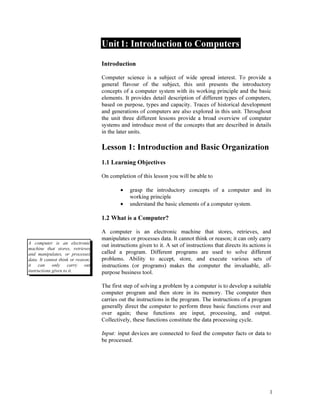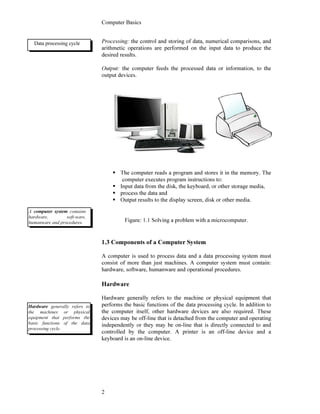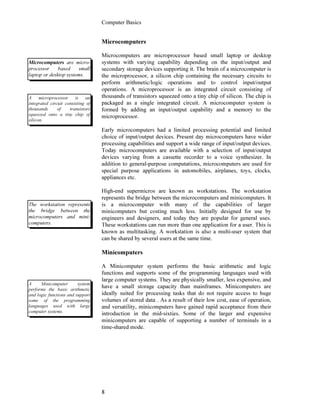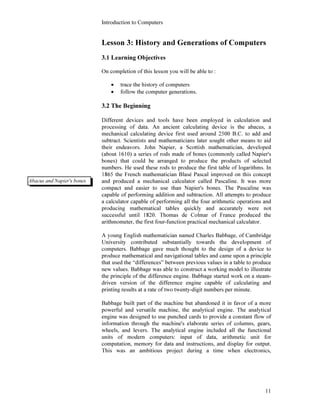A computer is an electronic machine that stores, retrieves and manipulates data based on instructions given in programs. It has four main components - hardware, software, humanware and procedures. Hardware refers to the physical machines that perform the basic functions of input, processing and output in the data processing cycle. Software includes system software like operating systems and application software for specific tasks. Humanware are the people who design, program and operate computers. Procedures define how a computer installation performs functions and handles issues. The document provides an introduction to basic computer concepts.















